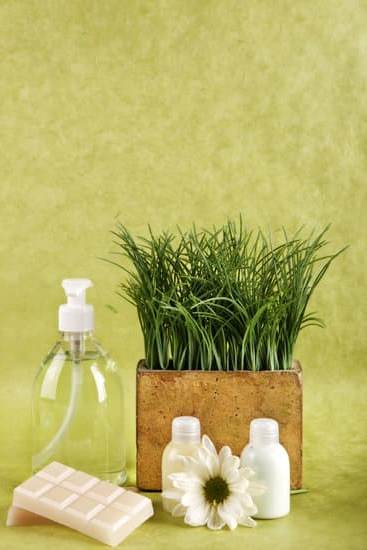Aromatherapy diffusers have become increasingly popular as more people embrace the benefits of essential oils for relaxation, stress relief, and overall well-being. These devices not only fill your space with a pleasant aroma but also have therapeutic properties that can enhance your mood and promote better sleep.
However, to ensure the longevity and optimal functioning of your aromatherapy diffuser, regular cleaning is essential. In this article, we will guide you on how to clean your aromatherapy diffuser effectively, step by step.
Regular cleaning of your aromatherapy diffuser is important for several reasons. Firstly, it helps maintain the cleanliness of the device, ensuring that no mold or bacteria build up in the water tank or other parts of the diffuser. This is particularly crucial if you use tap water instead of distilled water in your diffuser, as tap water may contain minerals and impurities that can accumulate over time.
Secondly, regular cleaning helps to preserve the purity and efficacy of the essential oils used in your diffuser. Over time, residual oil particles can cling to various components of the device, affecting its ability to disperse scent effectively. Cleaning removes these residues and ensures that each new session provides optimum aroma diffusion.
Lastly, cleaning your aromatherapy diffuser regularly prolongs its lifespan. Neglecting proper maintenance can cause clogs in the atomizer or nebulizer, which are critical components responsible for breaking down water molecules into fine mist particles that carry essential oils into the air.
Now that you understand why regular cleaning is important for your aromatherapy diffuser’s performance and lifespan let’s take a look at the tools and materials needed for effective cleaning in the next section.
Tools and Materials Needed for Cleaning
To effectively clean your aromatherapy diffuser, you will need a few tools and materials. Having the right supplies on hand will make the cleaning process much easier and more efficient. Here are the essential items you will need:
1. Water: You will need clean water for rinsing and cleaning various parts of the diffuser.
2. White vinegar or citric acid: These natural cleaning agents are highly effective in removing buildup and residue from the internal components of the diffuser.
3. Cotton swabs or soft cloth: These can be used to wipe down the exterior and interior parts of the diffuser, as well as hard-to-reach areas.
4. Mild dish soap: This can be used to wash removable parts such as the water tank.
5. Small brush: A small brush with soft bristles is useful for cleaning small crevices or hard-to-reach areas of the diffuser.
6. Paper towels: These can be used to dry off various parts after cleaning.
7. Toothpick or pin: This can be used to gently remove stubborn residue from tiny holes or crevices in the diffuser.
Having these tools and materials readily available will ensure that you can properly maintain your aromatherapy diffuser without hassle. Remember to only use gentle cleaners and avoid harsh chemicals that may damage or degrade the diffuser’s components. Additionally, ensure that all tools are clean and free from any dirt or debris before using them on your diffuser.
By following these guidelines, you can keep your aromatherapy diffuser functioning optimally while prolonging its lifespan. Regular maintenance and proper cleaning will not only enhance its performance but also preserve the quality of your essential oils for a more enjoyable aromatherapy experience.
Safety Precautions to Take While Cleaning the Diffuser
Taking proper safety precautions while cleaning your aromatherapy diffuser is crucial to ensure your personal safety and the longevity of the device. Here are some important safety measures to keep in mind when cleaning your diffuser:
1. Turn off and unplug the diffuser: Before you begin cleaning, make sure that the diffuser is completely turned off and unplugged from the power source. This will prevent any accidents or electric shocks during the cleaning process.
2. Allow the diffuser to cool down: If you have recently used your diffuser, give it some time to cool down before starting the cleaning process. Essential oils can heat up during operation, so it is important to avoid touching hot surfaces that could cause burns.
3. Handle with care: When handling the external parts or disassembling components of the diffuser, be gentle and use caution. Some diffusers are fragile and may break easily if mishandled.
4. Use mild cleaning agents: When choosing a cleaning agent for your diffuser, opt for mild solutions such as diluted vinegar or gentle dish soap. Abrasive chemicals or harsh cleaners can damage the delicate components of the diffuser.
5. Avoid water contact with electrical parts: While cleaning, be cautious not to let water come into contact with any electrical components of the diffuser. Damaging these parts can result in malfunctioning or even pose a safety risk.
6. Follow manufacturer’s instructions: It is essential to read and follow the manufacturer’s instructions for cleaning your specific aromatherapy diffuser model. Each device may have different recommendations regarding maintenance and cleaning techniques.
By following these safety precautions, you can ensure a safe and effective cleaning process for your aromatherapy diffuser without any risks or damages to yourself or the device. Always prioritize safety when dealing with electrical appliances, especially those that come into contact with water like an aromatherapy diffuser.
Section One
Regularly cleaning the external parts of your aromatherapy diffuser is essential to ensure its longevity and optimal performance. Over time, dust, dirt, and essential oil residue can build up on the exterior, which can affect the diffuser’s efficiency and quality of mist. In this section, we will provide you with a step-by-step guide on how to effectively clean the external parts of your diffuser.
Firstly, ensure that the diffuser is unplugged and turned off before you begin the cleaning process. This will prevent any accidents or damage to the device.
To clean the exterior of your diffuser, start by using a soft cloth dampened with warm water or a mild detergent-free soap solution. Gently wipe down all surfaces of the diffuser, including the top cover or lid, base, and buttons. Be cautious not to submerge any electronic components in water.
For stubborn stains or residue on the exterior, you can use isopropyl alcohol or white vinegar. Apply a small amount onto a cotton swab or cloth and gently scrub away any tough spots. Make sure to rinse thoroughly with clean water afterward to remove any traces of alcohol or vinegar.
Next, pay attention to small crevices and hard-to-reach areas such as vents or grooves. You can use a soft-bristled brush or an old toothbrush dipped in warm soapy water to gently scrub these areas. Avoid using excessive force as it may damage the delicate parts of your diffuser.
Once you have finished cleaning all external parts of your diffuser, dry them thoroughly with a clean cloth before reassembling and using it again.
By following these simple steps regularly and maintaining proper cleanliness of your aromatherapy diffuser’s external parts, you can prolong its lifespan and enjoy the benefits of soothing scents for years to come.
Section Two
Step 1: Empty and Rinse the Tank
To begin cleaning the water tank or reservoir of your aromatherapy diffuser, start by turning off and unplugging the device. Carefully remove the water tank from the base of the diffuser. Pour out any remaining water from the tank and rinse it thoroughly with warm water. This will help to remove any residue or impurities in the tank.
Step 2: Use a Mild Cleaning Solution
After rinsing, fill a small bowl or container with warm water. Add a few drops of mild dish soap or vinegar to create a cleaning solution. Submerge the empty water tank into the solution and gently swish it around to ensure that all surfaces are cleaned.
Step 3: Scrub and Rinse
Using a soft brush or sponge, scrub the interior walls and bottom of the water tank to remove any stubborn buildup or residue. Pay close attention to areas where essential oils may have accumulated. Once you have thoroughly scrubbed the tank, rinse it again under warm running water to remove any soap or vinegar residue.
Step 4: Dry Thoroughly
After rinsing, shake out any excess water from the tank and place it on a clean towel or paper towels to air dry. Make sure that all parts of the tank are completely dry before reassembling your diffuser. Leaving moisture in the tank can lead to mold growth or damage to your device.
Cleaning your aromatherapy diffuser’s water tank regularly is essential for maintaining its performance and preventing bacterial growth. By following these steps, you can ensure that your diffuser functions optimally and continues to provide you with refreshing scents in your space.
Section Three
Step 1: Disconnect the Diffuser and Empty the Water Tank
Before you begin cleaning the ultrasonic atomizer or nebulizer of your aromatherapy diffuser, make sure to disconnect it from the power source. Once unplugged, carefully remove the water tank or reservoir and empty any remaining water. This step is important to ensure your safety during the cleaning process.
Step 2: Wipe Down the Atomizer or Nebulizer With a Soft Cloth
After removing the water tank, locate the ultrasonic atomizer or nebulizer inside your diffuser. Use a soft cloth or cotton swab to wipe away any dirt, mineral deposits, or residue that may have accumulated on these parts. Be gentle but thorough in your cleaning, ensuring all surfaces are clean and free from debris.
Step 3: Use Vinegar Solution for Deep Cleaning
Sometimes, wiping down with a cloth might not be enough to remove stubborn build-up on the atomizer or nebulizer. In such cases, you can use a vinegar solution for deep cleaning. Mix equal parts of white vinegar and water in a small bowl. Dip a cotton swab into this mixture and carefully clean all around the atomizer or nebulizer, paying close attention to any nooks and crannies where residue might collect.
Step 4: Rinse and Dry Thoroughly
After using the vinegar solution, rinse off any remaining residues by wiping down with a damp cloth. Make sure to remove all traces of vinegar before proceeding further. Once rinsed, dry the ultrasonic atomizer or nebulizer completely using a clean cloth or allowing it to air dry naturally.
Step 5: Reassemble Your Diffuser
Once you have finished cleaning the ultrasonic atomizer or nebulizer and it is completely dry, reassemble the diffuser by placing the water tank back into its position. Make sure all parts fit securely and are correctly aligned before connecting the diffuser to the power source.
Cleaning the ultrasonic atomizer or nebulizer of your aromatherapy diffuser is an essential step towards maintaining optimum performance and extending the lifespan of your device. By following these simple steps regularly, you can ensure that your diffuser continues to provide you with a soothing and aromatic experience every time you use it.
Section Four
Essential oils can leave residue in your aromatherapy diffuser, which can affect its performance and even cause it to clog. It is important to regularly clean your diffuser to remove this stubborn residue. Here are some tips on how to effectively remove essential oil residue from your diffuser:
1. Use vinegar: Vinegar is a natural cleaner that can help dissolve the sticky residue left by essential oils. Mix equal parts of white vinegar and water in a bowl. Dip a clean cloth or cotton swab into the mixture and gently wipe the inside of the diffuser where the residue is present. Rinse with water afterward to remove any vinegar smell.
2. Citric acid solution: Citric acid is another effective cleaner for removing essential oil residue. Dissolve 1-2 tablespoons of citric acid powder in warm water. Pour this solution into the empty water tank of your diffuser and let it sit for about 30 minutes to an hour. Afterward, rinse the tank thoroughly with clean water.
3. Use a soft brush or Q-tip: For hard-to-reach areas or areas with built-up residue, you can use a soft brush or a Q-tip soaked in rubbing alcohol or vinegar to scrub gently and remove the stubborn residue. Be cautious not to damage any delicate parts of the diffuser while doing this.
It is important to note that different types of diffusers may have specific cleaning instructions provided by the manufacturer. Always refer to the user manual for guidance on cleaning your specific model. Regularly cleaning your diffuser not only helps maintain its performance but also ensures that you are using a clean and hygienic device for enjoying your favorite aromatherapy scents.
Section Five
To ensure the optimal functioning of your aromatherapy diffuser, it is important to regularly clean its mist outlet and air vents. These parts can become clogged with essential oil residue, dust, or other debris over time, which can affect the quality and distribution of the scent. By following these steps, you can effectively clean these areas and maintain the performance of your diffuser.
To clean the mist outlet and air vents, you will need a few tools and materials. Start by gathering a soft cleaning brush or cotton swabs, mild dish soap or white vinegar, warm water, and a small bowl or container. It is important to use gentle cleaning agents to avoid damaging the delicate components of the diffuser.
Firstly, unplug the diffuser from the power source to prevent any accidents during cleaning. Then, using a soft brush or cotton swab dipped in warm soapy water or white vinegar solution, gently clean the mist outlet and air vents. Be careful not to push any debris further into these openings; instead, focus on removing any visible dirt or residue.
For stubborn residue that may have accumulated over time, you may need to soak the mist outlet and air vents in warm soapy water for about 10-15 minutes. This will help loosen up any hardened residues before gently scrubbing them away with a soft brush or cotton swab. Rinse thoroughly with warm water after cleaning to remove any soap or vinegar residue.
By regularly cleaning your aromatherapy diffuser’s mist outlet and air vents, you can ensure that it continues to function optimally and efficiently distribute refreshing scents throughout your space. Taking these simple maintenance steps will also prolong the lifespan of your diffuser and provide you with long-lasting benefits for your well-being.
Section Six
After you have completed the previous sections and have thoroughly cleaned your aromatherapy diffuser, it is important to take some final steps to ensure proper maintenance and optimal functioning of your device. These steps will help prolong the lifespan of your diffuser and keep it working effectively for a longer period.
Firstly, once the diffuser has been cleaned and dried, it is crucial to store it properly. Find a cool, dry place where you can keep your diffuser when you are not using it. Avoid storing it near heat sources or in direct sunlight as this can damage the internal components. Additionally, make sure to remove any excess water from the tank and wipe down the exterior with a soft cloth before storing.
Secondly, regularly check and replace the filters in your aromatherapy diffuser if applicable. Some models come with removable filters that help purify the air before releasing the mist. Over time, these filters can get clogged with impurities and affect the performance of your device. Consult your manual or contact the manufacturer for guidance on how often to change these filters.
Lastly, don’t forget about routine maintenance tasks such as checking for leaks or cracks in the water tank or reservoir. Inspect all parts of your diffuser periodically to ensure there is no damage that could potentially lead to malfunctioning or reduced effectiveness. If you do notice any issues, contact the manufacturer for assistance or consider getting a replacement part if necessary.
By following these final steps, you can ensure that your aromatherapy diffuser remains in good condition and continues to provide you with its health benefits for a long time. Regular maintenance not only extends the life of your device but also ensures that you experience consistent mist output with each use.
Conclusion
In conclusion, regular and thorough cleaning of your aromatherapy diffuser is crucial for its longevity and optimal functioning. By taking the time to properly clean and maintain your diffuser, you can ensure that it continues to provide you with the benefits of aromatherapy for a long time.
Cleaning your diffuser not only removes any residue or buildup that may affect its performance but also helps prevent the growth of mold, bacteria, and other harmful microorganisms. This is especially important if you use essential oils that are known for their antimicrobial properties. Regular cleaning will help maintain a clean and healthy environment in your home or office.
To clean your diffuser, you will need some basic tools and materials such as cotton swabs, rubbing alcohol or vinegar, water, and a soft cloth. It is important to follow safety precautions while cleaning, such as unplugging the diffuser before starting the cleaning process and avoiding the use of harsh chemicals that may damage the diffuser.
In addition to cleaning the external parts of the diffuser, it is important to clean the water tank or reservoir and the ultrasonic atomizer or nebulizer. Removing stubborn essential oil residue can be done with simple tips such as soaking cotton swabs in rubbing alcohol or using vinegar solutions. Don’t forget to clean the mist outlet and air vents as well.
By following these steps and implementing proper cleaning practices, you can ensure that your aromatherapy diffuser remains in good condition for a long time. Regular maintenance will not only prolong its lifespan but also guarantee optimal performance. So make it a habit to regularly clean your diffuser to enjoy all the benefits it has to offer.
Frequently Asked Questions
What Is the Best Way to Clean an Aroma Diffuser?
The best way to clean an aroma diffuser is by following the manufacturer’s instructions. Typically, it involves a simple process of cleaning the water tank and wiping down the outer surface of the diffuser. Many diffusers can be cleaned using a mixture of water and mild soap or vinegar solution.
It is important to ensure that all residue from essential oils is removed, as they can build up over time and affect the performance of the diffuser. Regular cleaning helps maintain the effectiveness and longevity of the aroma diffuser, ensuring that it continues to work properly.
Do Essential Oil Diffusers Need to Be Cleaned?
Yes, essential oil diffusers need to be cleaned regularly for optimal performance and safety. Over time, essential oils can leave residue in the water tank and on other parts of the diffuser, which may clog or degrade its functionality.
Regular cleaning helps remove this buildup and prevents any potential damage or issues from occurring. Additionally, cleaning also prevents cross-contamination when switching between different essential oils, ensuring that the scents remain pure and unaffected by previous uses.
Can I Diffuse Vinegar to Clean My Diffuser?
While vinegar is commonly used as a natural cleaner for various household items, it is not recommended to diffuse vinegar directly in your diffuser to clean it. Diffusing vinegar may cause a strong odor that can linger in your surroundings for hours or even days.
Instead, it is best to follow the manufacturer’s instructions for cleaning your specific diffuser model using recommended cleaning solutions, such as water mixed with mild soap or a vinegar-water solution in some cases. These methods are generally effective in removing any residue or buildup without leaving a strong smell behind.

Are you looking for a natural way to improve your health and wellbeing?
If so, aromatherapy may be the answer for you.





